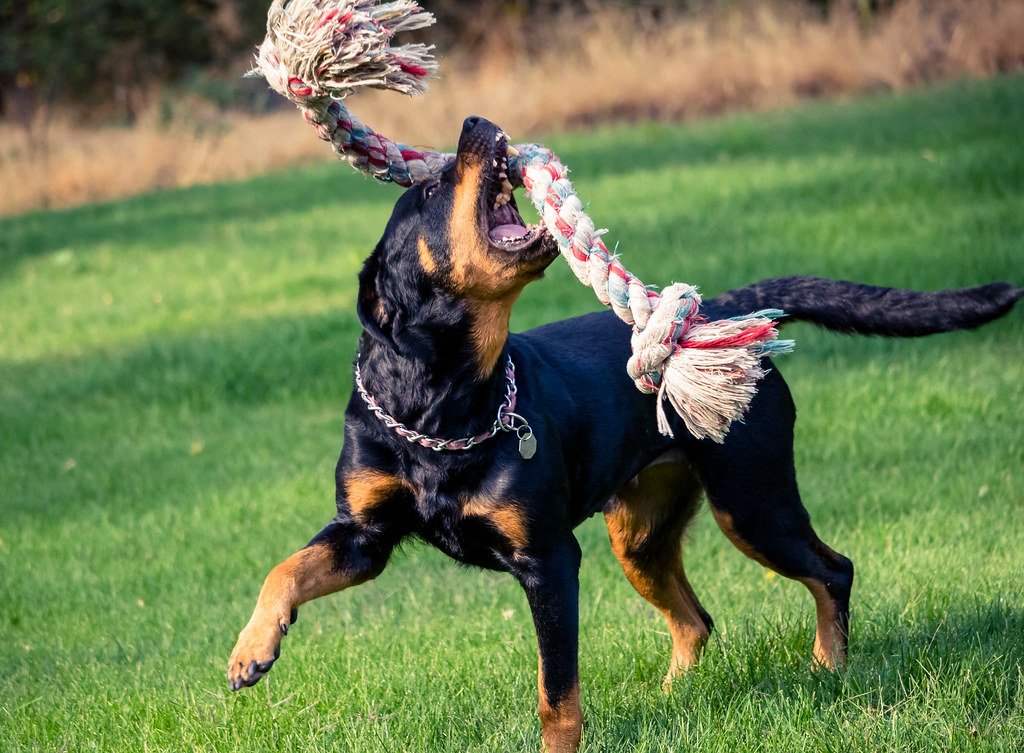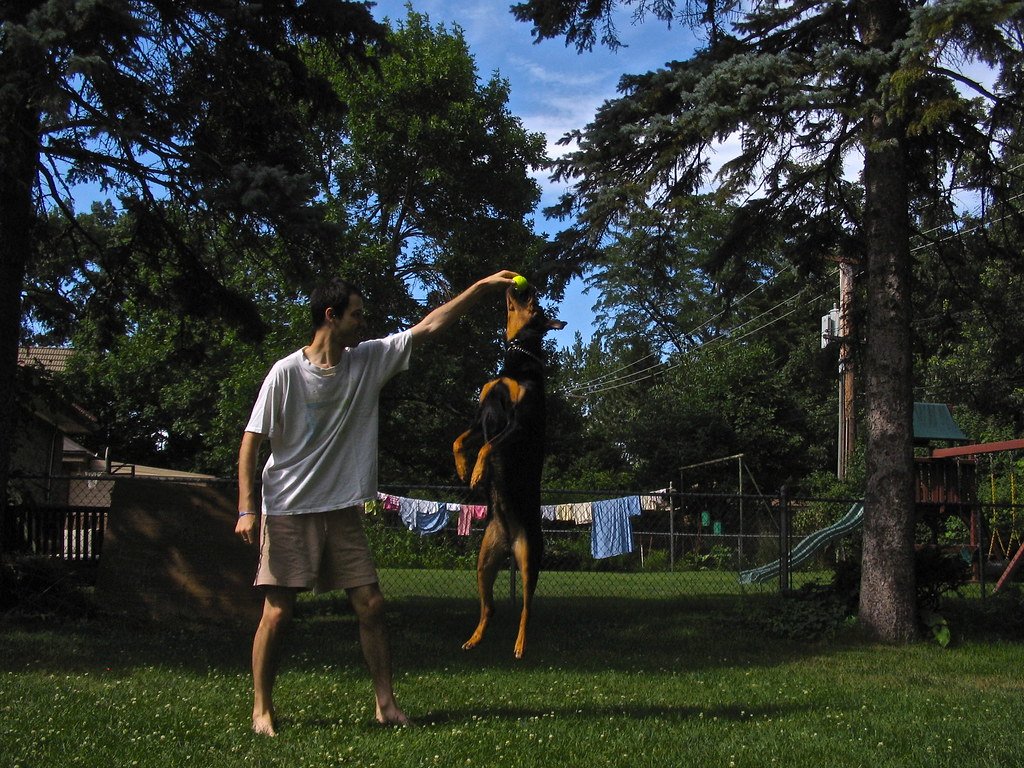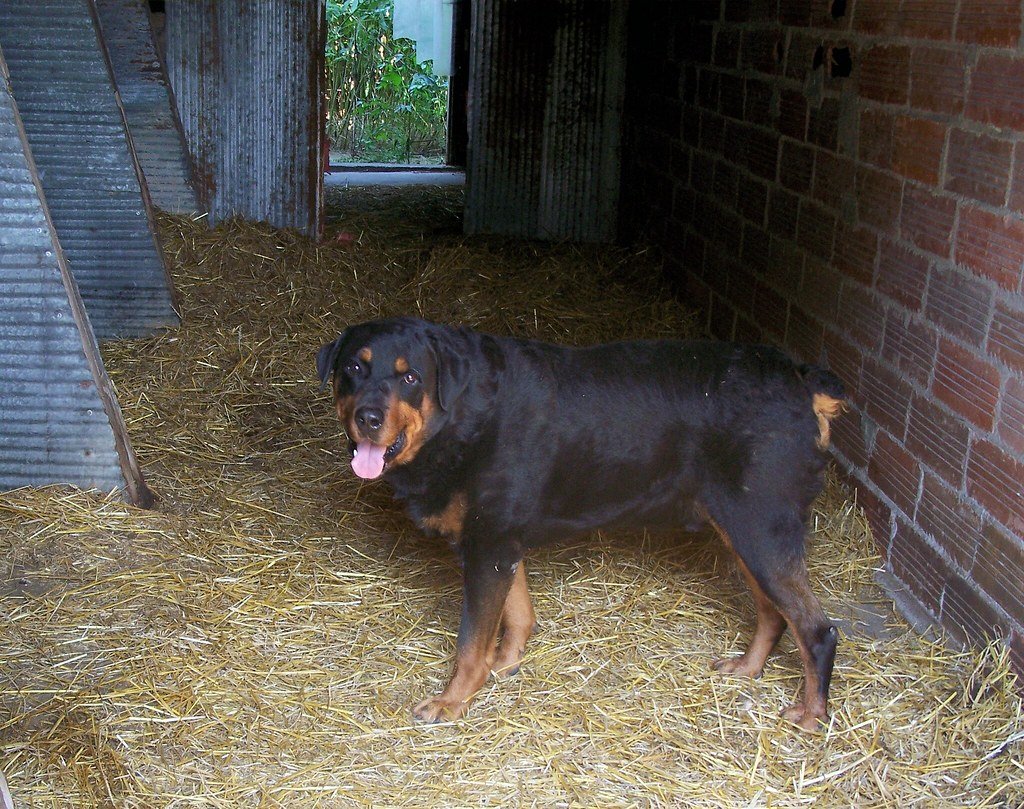Have you ever stared into the soulful eyes of a Rottweiler and wondered how such a gentle giant could sometimes cause so much chaos? Rottweilers are brilliant, loving dogs—yet they’re also infamous for their stubborn streaks, protective instincts, and explosive energy. If you’ve ever felt overwhelmed by your Rottie’s antics, you’re not alone. Many owners have stood in your shoes, shaking their heads with equal parts frustration and affection. Today, we’ll dive into the most common behavioral issues with Rottweilers and, more importantly, discover how to turn those struggles into strengths. Whether you’re a seasoned Rottie parent or considering bringing one home, this guide is packed with real-life tips and heartfelt advice to help you and your dog live your happiest lives together.
1. Aggression Towards Strangers
One of the most unnerving behaviors Rottweiler owners face is aggression towards strangers. Rotties are naturally protective, and that loyalty can sometimes morph into suspicion or hostility when meeting new people. This issue often shows up as barking, growling, or even lunging at guests or passersby. The good news is, early and consistent socialization can make a world of difference. Invite friends over regularly and reward calm behavior with treats and praise. If your Rottweiler is already showing signs of aggression, you might need to use a leash and gentle corrections to redirect their focus. Sometimes, professional help from a dog trainer is the safest bet for serious cases. The key is to show your dog that strangers aren’t a threat, but rather, new friends to be welcomed.
2. Separation Anxiety
It’s heartbreaking to come home to chewed-up shoes and shredded pillows—all because your Rottweiler missed you. These dogs form deep bonds with their families, which makes them prone to separation anxiety. You might notice whining, pacing, barking, or destructive behaviors when you leave. To manage this, start with short absences and gradually increase the time you’re away, always returning calmly. Leave behind toys, puzzle feeders, or even a piece of your clothing for comfort. Establish a goodbye routine—something simple, like giving a treat—so your Rottie learns to associate departures with positive experiences. If the anxiety is severe, consulting a behaviorist can help tailor a plan that works for your unique dog.
3. Excessive Barking

Rottweilers aren’t the yappiest dogs out there, but when they bark, it’s impossible to ignore. Excessive barking can stem from boredom, alertness, or simply wanting your attention. The first step is figuring out why your dog is barking. If it’s because of boredom, increase exercise and mental stimulation—think long walks, games of fetch, or training sessions. For alert barking, teaching the “quiet” command can help. Always reward your Rottweiler for being silent after you give the cue. Sometimes, ignoring attention-seeking barking (without yelling or scolding) is the best approach. Remember, your dog wants to communicate—so listen, and then guide them toward better habits.
4. Stubbornness During Training
Have you ever asked your Rottie to sit, only to receive a blank stare in return? Rottweilers are incredibly intelligent, but that brainpower can also make them stubborn. They quickly sense inconsistency and will test your boundaries if given the chance. The trick is to keep training sessions short, upbeat, and consistent. Use plenty of treats, toys, and praise. If your Rottweiler gets bored or distracted, switch up the routine or try training in a new location. Patience is your secret weapon—never resort to harsh corrections. Instead, celebrate small wins, and your persistent effort will pay off in better manners and a stronger bond.
5. Resource Guarding
If your Rottie growls or snaps when you approach their food or toys, you’re dealing with resource guarding. This behavior is rooted in instinct—they’re just trying to protect what they value. To manage it, start by teaching “drop it” and “leave it” commands using positive reinforcement. Practice swapping items for high-value treats, so your dog learns that giving things up leads to rewards. Avoid punishing your Rottweiler for guarding, as this can increase anxiety and make things worse. If resource guarding escalates to biting or intense aggression, it’s time to bring in a professional trainer who specializes in behavior modification.
6. Jumping Up on People

Nothing says “hello” quite like 100 pounds of Rottweiler jumping into your arms. While the enthusiasm is endearing, it’s not so cute when your dog knocks over a guest or a child. Rottweilers jump up to seek attention or express excitement. Teach your dog that sitting calmly earns affection, while jumping does not. Turn away or ignore your Rottie when they jump, and reward them only when all four paws are on the ground. Consistency from everyone in the household is vital—mixed messages only confuse your dog. With persistence, your Rottweiler will soon greet people with polite, grounded enthusiasm.
7. Leash Pulling
Walking a Rottweiler who pulls on the leash feels like being dragged behind a freight train. This breed is strong, and without proper training, their natural urge to explore can make walks a struggle. Invest in a sturdy harness and practice loose-leash training daily. Stop walking the moment your Rottie pulls, and only move forward when the leash is slack. Reward your dog for walking by your side using treats and praise. If walks are especially challenging, consider hiring a trainer for one-on-one guidance. Remember, walking together should be enjoyable for both of you—and with patience, it absolutely can be.
8. Overprotectiveness
Rottweilers have a deep desire to defend their family. While this trait makes them excellent watchdogs, it can also lead to overprotective behaviors—barking, growling, or placing themselves between you and others. To tone down this instinct, expose your Rottie to a variety of people, places, and situations in a controlled, positive way. Socialization is crucial from puppyhood, but it’s never too late to start. Teach your dog to relax around new guests and reward calm behavior. If your Rottweiler struggles to let their guard down, seeking help from a professional behaviorist can prevent problems from escalating.
9. Chasing Small Animals

It’s almost comical—until your Rottweiler bolts after a squirrel and you’re left clinging to the leash. Rottweilers have a strong prey drive and may chase cats, rabbits, or even smaller dogs. To manage this, work on a reliable recall command and practice it in distraction-free environments before gradually increasing the challenge. Keep your Rottie on a leash or in a secure area when outdoors. Provide plenty of exercise and interactive toys to burn off excess energy that might otherwise go into chasing. With time and consistency, your dog can learn to control their impulses and coexist peacefully with other animals.
10. Destructive Chewing
Chewed furniture, shoes, or even walls—sound familiar? Rottweilers chew for many reasons: boredom, stress, teething, or just for fun. The best way to curb destructive chewing is to provide plenty of appropriate chew toys and rotate them to maintain interest. Make sure your dog gets enough physical and mental exercise, as a tired Rottie is less likely to get into trouble. If your Rottweiler chews when left alone, crate training can help keep them safe and your belongings intact. Always redirect chewing to acceptable items, and avoid punishing after the fact—your dog won’t connect the dots.
What’s the most surprising behavior you’ve experienced with your Rottweiler?

Esther is from India; the heartbeat of South Asia, holding a Master’s degree in Zoology and a postgraduate diploma in Animal Welfare. Her enthusiasm for animal welfare drives her passion and dedication to working for animals, ensuring their well-being, and advocating for their rights. With a solid academic background and hands-on experience, she is committed to making a positive impact in the field of animal welfare. In her free time, she enjoys embroidery and sewing. As a Chennaite from Tamil Nadu, Esther loves Bharathanatyam, an Indian classical dance form.





